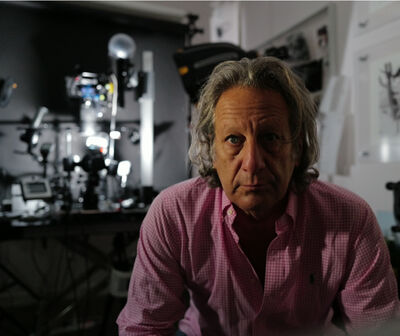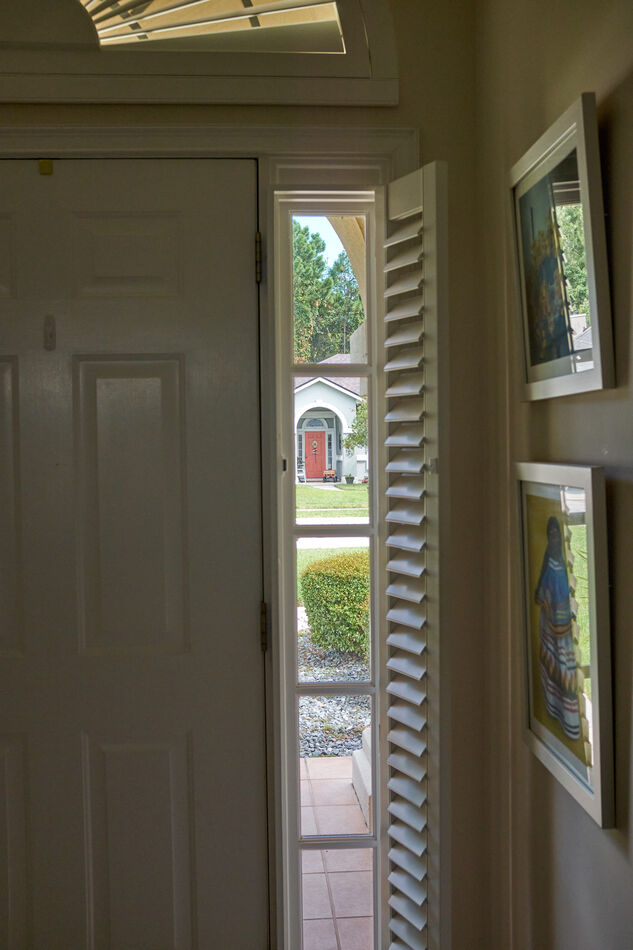What does ETTR accomplish?
Sep 27, 2022 03:33:20 #
selmslie wrote:
Huh? 

Huh, huh, huh!!!
This whole thread has devolved from bad to worse!!!
I think ETTR has been here only 1,000 times before; what can be accomplished at 1,001???
Loren - in Beautiful Baguio City
Sep 27, 2022 04:48:57 #
rlv567 wrote:
Huh, huh, huh!!!
This whole thread has devolved from bad to worse!!!
I think ETTR has been here only 1,000 times before; what can be accomplished at 1,001???
Loren - in Beautiful Baguio City
This whole thread has devolved from bad to worse!!!
I think ETTR has been here only 1,000 times before; what can be accomplished at 1,001???
Loren - in Beautiful Baguio City
Right and that is the rabbit hole I was afraid it was going to go down
Sep 27, 2022 05:12:09 #
Capn_Dave wrote:
Right and that is the rabbit hole I was afraid it was going to go down
The only redeeming factor is that it's a (perverse) sort of entertainment!
Loren - in Beautiful Baguio City
Sep 27, 2022 05:24:34 #
rlv567 wrote:
Huh, huh, huh!!!
This whole thread has devolved from bad to worse!!!
I think ETTR has been here only 1,000 times before; what can be accomplished at 1,001???
Loren - in Beautiful Baguio City
This whole thread has devolved from bad to worse!!!
I think ETTR has been here only 1,000 times before; what can be accomplished at 1,001???
Loren - in Beautiful Baguio City
Feel free to Unwatch.
Sep 27, 2022 05:26:35 #
Capn_Dave wrote:
Right and that is the rabbit hole I was afraid it was going to go down
Feel free to Unwatch.
Sep 27, 2022 05:47:13 #
rlv567 wrote:
The only redeeming factor is that it's a (perverse) sort of entertainment!
Loren - in Beautiful Baguio City
Loren - in Beautiful Baguio City
Yep somehow it is a strange curiosity we have, sort of like watching events in the colosseum or professional wrestling
Sep 27, 2022 11:05:08 #
mmills79
Loc: NJ
selmslie wrote:
I ran two tests to address some misconceptions abo... (show quote)
Hi, Interesting discussion that I would like to understand better.
I couldn't exactly see how you determined from the RAW histograms/data that some elements were actually blown out (even though in some cases you had no blinkies)?
Could you show an example of a more magnified view of your data and discuss it so, I can learn how you saw that?
sorry if this is a silly question but I don't have your app that you used.....
Sep 27, 2022 11:31:06 #
mmills79 wrote:
Hi, Interesting discussion that I would like to understand better.
I couldn't exactly see how you determined from the RAW histograms/data that some elements were actually blown out (even though in some cases you had no blinkies)?
Could you show an example of a more magnified view of your data and discuss it so, I can learn how you saw that?
sorry if this is a silly question but I don't have your app that you used.....
I couldn't exactly see how you determined from the RAW histograms/data that some elements were actually blown out (even though in some cases you had no blinkies)?
Could you show an example of a more magnified view of your data and discuss it so, I can learn how you saw that?
sorry if this is a silly question but I don't have your app that you used.....
Happy to explain. Think of a graph from left to right that has 256 sections. Each section contains a value that equals black to white. 1 being 0 and white being 255. The individual sections show how many of the total pixel count of the image are in each section.
The pixels up against the far right side, 255, are the white, blown out pixels. Same is true on the left side at 0, for black. The absence of color or light, cannot be lightened.
BYW, This is a more accurate way to determine blown out highlights than flashing blinkies.
In RGB, there is a histogram for each. Red, green, blue.
Hope this is helpful.
Sep 27, 2022 12:30:08 #
mmills79 wrote:
Hi, Interesting discussion that I would like to understand better.
I couldn't exactly see how you determined from the RAW histograms/data that some elements were actually blown out (even though in some cases you had no blinkies)?
Could you show an example of a more magnified view of your data and discuss it so, I can learn how you saw that?
sorry if this is a silly question but I don't have your app that you used.....
I couldn't exactly see how you determined from the RAW histograms/data that some elements were actually blown out (even though in some cases you had no blinkies)?
Could you show an example of a more magnified view of your data and discuss it so, I can learn how you saw that?
sorry if this is a silly question but I don't have your app that you used.....
Not at all a silly question.
Here is the example from page 5 presented a little differently.

The histogram Y-Axis range

makes it easier to see the ends of the plots and the number of pixels where the count is low. The raw value scale is from 0 to 16383 and raw values double at each one-stop increment. Most 14-bit cameras do not normally reach 16383 but they will come within about 0.05 stops of that limit.
The spikes on the right also make it clear that the green and blue channels are at their limit. The comb-like appearance on the left ends of the plots also give us a hint that there may be loss of smooth tonality below a raw value of about 64.
The details in the upper center give us a count of the number of pixels that are blown out in each channel to tell us more about the green and blue spikes. They also indicate that about half of the 16MP image is in the 0-64 raw value range.

RawDigger is an excellent inexpensive tool (about $20 unless it's on sale) for researching the relationships between the raw data and the JPEG. It is also a great way to screen your images and decided whether or not there is a potential for recovering highlight and shadow information.
This image was just for illustration. It points out that the chances of making a decent image out of this single capture are slim. To get a better result a second image with a couple of stops more exposure could be combined with it to reduce the appearance of noise that was brought out of the shadows. That might also call for a tripod and a lower ISO but this camera is already at base ISO 200.
Sep 27, 2022 13:00:55 #
mmills79
Loc: NJ
selmslie wrote:
Not at all a silly question. br br Here is the ex... (show quote)
So what I guess is confusing me is that in the graphs, both the Y & X axis are unlabeled, and that was giving me a brain cramp. I use the histogram in the camera a lot so thinking about it that way I do understand that to the left side of the histogram if the pixels bump up against the top limit of the Y axis, that indicates lost info (black info) and similarly if the pixels to the right bump up against the top limit of the Y axis, you have lost highlight info. I also understand that this histogram reflects the JPEG (as opposed to the RAW file). I believe the Nikon RAW file is 12 bits so that would be 2^12=4096 levels.
So clarify for me if you will what are the labels for Primary Y axis and the Primary X axis on your graphs (there also seems to be a secondary X axis in "EVO")? I think (or so it seems) the primary X axis is the "bit levels" which doesn't translate easy in my brain? I would have otherwise thought the Y axis would be the "bit levels", which in your case I guess are 16 bit (2^16=65,536 levels) and I would have thought the Y axis would be the "luminescence" going left to right from dark to white. So, in that case, if the pixels at any point along the X axis vertically exceeded the maximum "bit level", you could interpret that as lost information. But it doesn't seem to be that way. Although I could see that the primary Y axis is the bit levels and then I guess I don't understand what the Y axis is? How am I mis-thinking this?
Sep 27, 2022 13:18:45 #
mmills79 wrote:
So what I guess is confusing me is that in the gra... (show quote)
The horizontal Z-Axis just has a scale representing the raw values of the pixels. A spike on the right hints at blown pixels even if it does not reach the top.
The vertical Y-Axis can have a linear, logarithmic or square root scale. When the range is set to Auto the upper limit is set by the height of the tallest of the three colors. It's magnitude has no significance. There is no upper limit.
EV0 is just an arbitrary selection for the center of the plot. Most of my cameras place middle gray between a value of 1000 and 2000. I could put EV0 at 1448 (2^10.5) but that just moves the EV0 ½ stop to the left.
Sep 27, 2022 14:10:31 #
mmills79 wrote:
I also understand that this histogram reflects the JPEG (as opposed to the RAW file). I believe the Nikon RAW file is 12 bits so that would be 2^12=4096 levels.
Nikon has been using 14-bit raw files for a very long time. Some models provide the option of 12-bit but that's not the standard.
Sep 27, 2022 17:43:55 #
mmills79
Loc: NJ
selmslie wrote:
Nikon has been using 14-bit raw files for a very long time. Some models provide the option of 12-bit but that's not the standard.
You are right! My mistake. The Nikon D7200 creates 14-bit raw files which is 16,384 levels.
Thank you!
Sep 27, 2022 17:50:26 #
selmslie wrote:
The horizontal Z-Axis just has a scale representing the raw values of the pixels.
The horizontal axis is the X-Axis.
Sorry for the typo.
Sep 27, 2022 17:56:28 #
If you want to reply, then register here. Registration is free and your account is created instantly, so you can post right away.













